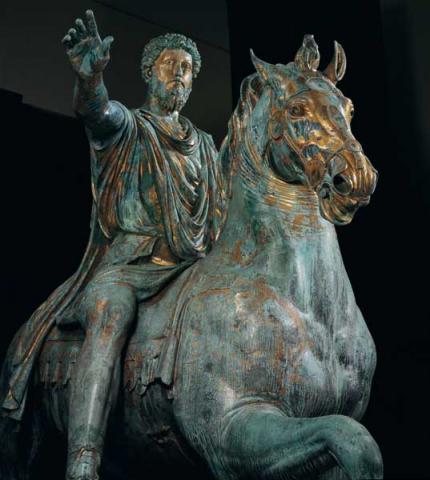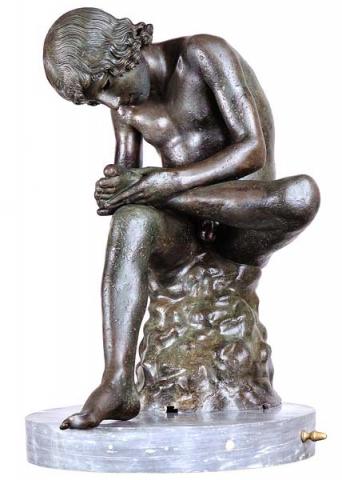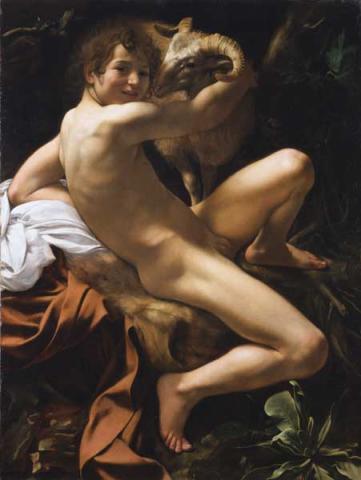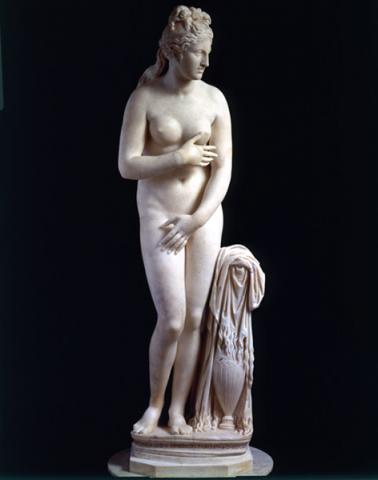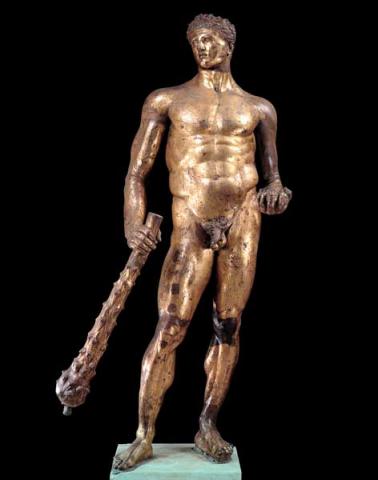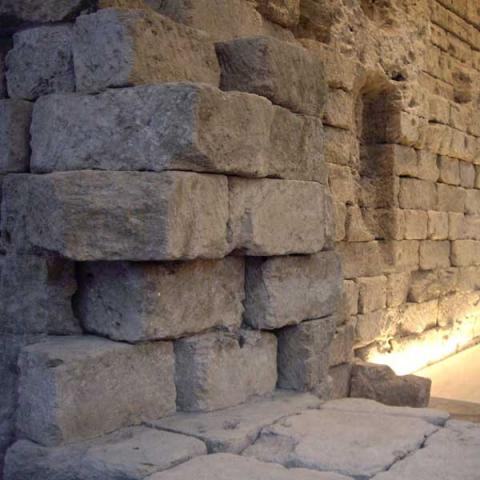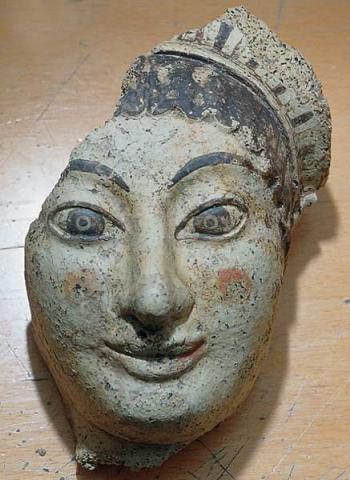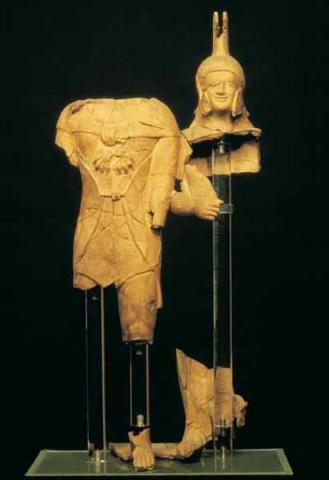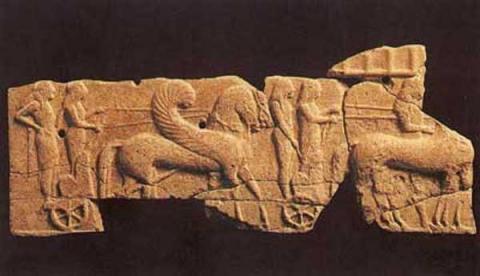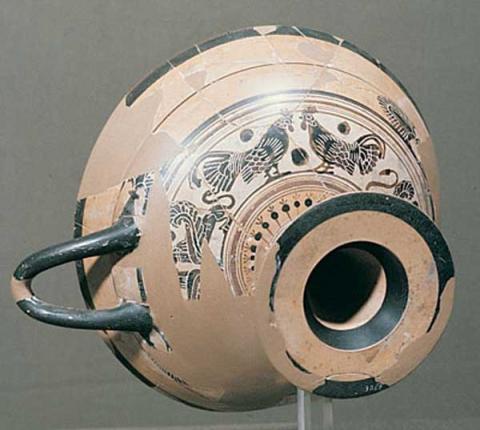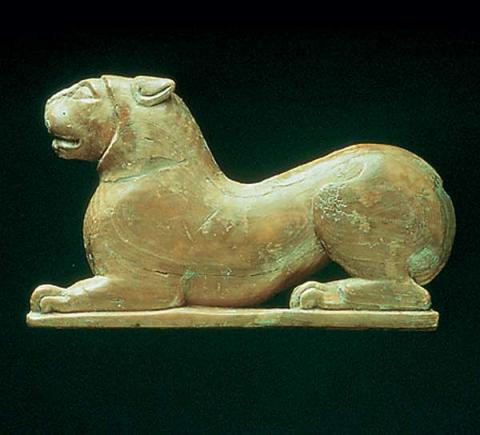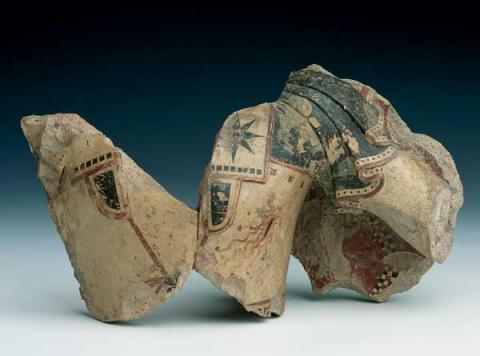Area of the temple of Jupiter Capitolinus
Of this temple have been brought to light the impressive foundations made from blocks of stone that, through the superficial layer clay, rest upon the tufa rock below. Also freed from the modern walls that covered it, restored and suitably highlighted is the so called "Roman Wall", the only part of the podium that has come to posterity in its full height, on top of which is still to be found a considerable layer of cement-like material from ancient roman times.
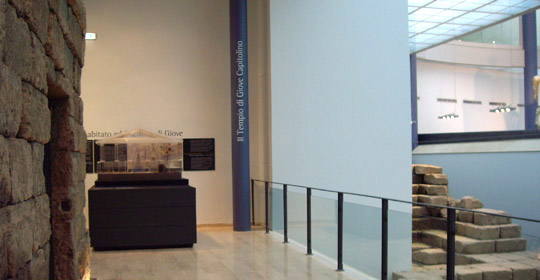
The luminous gallery that opens onto the Giardino Caffarelli, constructed in what used to be the stables of the palace, allows one to admire for the first time, with a rich array of reconstructive drawings and models, the extraordinary results of the archaeological excavations completed in 2000 in the area of the "Giardino Romano", which have constituted the indispensable preliminary phase for the realisation of the grand exedra for Marc Aurelius.
The temple of Jupiter, Juno and Minerva, built by King Tarquinius Priscus and terminated by king Tarquinius Superbus in the sixth century BC, and rebuilt several times over the centuries (noteworthy for their grandeur are the reconstruction of the first century BC and that of Domitian in the first century AD), was systematically destroyed in the post-antique period and used as a quarry for building materials. Nowadays it is remarkable for its extraordinary size, that can be reasonably reconstructed: the seven blocks of the podium from the age of the Tarquins cover an area corresponding to the width of the sixteenth century Palazzo Caffarelli, now part of the Capitoline Museums, and of its garden.
The temple was consecrated under the consul M. Horatius Pulvillus at the beginning of the Republican period, on 13 September 509 BC.
Etruscan workers were used in its implementation, which required significant financial commitment, among them we remember Vulca, a coroplastic artist from the town of Veii, who was commissioned the statue of Jupiter and perhaps even the great chariot to be placed at the top of the roof; it is said that, once it was shaped and placed in the furnace, it expanded beyond measure: the prodigy was considered auspicious of the future greatness of Rome.
Over the years the building preserved its main architectural features: its plan (62 x 54 mt), almost square, was occupied for about half its depth by three rows of six columns apart and low and for the other half by three cellas dedicated to the Capitoline triad; it was closed to the back end, it had columns on the sides and the floor was approximately at the level of the Terrazza Caffarelli.
Among the hills of Rome, the Capitoline Hill was permanently inhabited many centuries before the others.
This fact, which was already known to the Romans, who identified in the “City of Saturn” its primitive village, was confirmed by archaeological excavations conducted in the Roman Garden, the present Exedra of Marcus Aurelius: it is possible to date the village on the Capitoline hill in the Middle Bronze Age ( XIV-XVII century BC).
The materials of the windows witness the presence of a settlement of the archaic period with evidence for continuous occupation from the Bronze Age into the Iron Age. The excavated area, a strip of the ancient Capitolium, included the foundations of the eastern side of the temple of Jupiter and the immediately adjacent area. The excavations of the foundations at the side of the temple, 8mt deep, has also shed light on some structural details of the building.


























